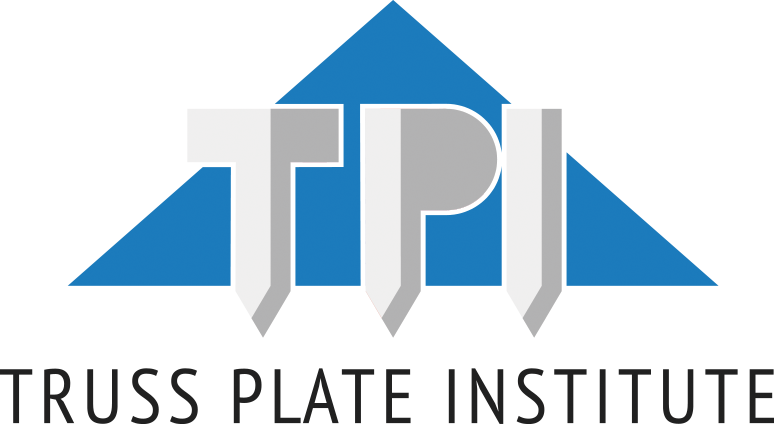TPI 2 Standard Development PROJECT - In Progress
The Truss Plate Institute has officially initiated the ANSI-accredited consensus process to develop a new American National Standard titled TPI 2 – National Standard for Structural Testing of Metal Plate Connected Wood Trusses. Notice of the project was published in ANSI’s Standards Action on July 25, 2025.
For a more detailed understanding of the update process, please refer to the information provided below.
TPI 2 Scope
The new TPI 2 standard will establish procedures for testing and evaluating Metal-Plate-Connected (MPC) wood trusses for four distinct objectives: (1) determining truss stiffness, (2) testing for design confirmation (3) establishing design capacities, and (4) assessing deflection recovery performance. The standard will outline methods for conducting each type of test and provide guidance on interpreting and applying the results to support design validation, product evaluation, and quality assurance.
TPI 2 Project Phases
COMPLETED PHASE 1: Project Initiation (see below for more information)
COMPLETED PHASE 2: Project Committee Formation (see below for more information)
FUTURE PHASE 3: Project Committee Work and Balloting (see below for more information)
FUTURE PHASE 4: Public Review (see below for more information)
FUTURE PHASE 5: Final Approval (see below for more information)
PHASE 1: Project Initiation - COMPLETED
The initiation phase for TPI 2 involves the formal steps required to begin the development of a new American National Standard. As an ANSI-accredited standards developer, TPI must complete the following actions during this phase in accordance with ANSI’s Essential Requirements, and TPI’s Project Committee Method for Achieving Consensus (PCMAC):
Obtain approval from the TPI Board of Directors to initiate the development of a new standard. - COMPLETED
Submit a Project Initiation Notification (PINS) to ANSI to formally announce the intent to develop TPI 2 in ANSI Standards Action. - COMPLETED
Publicly announce the project and call for participation on the Project Committee (TPI Press Release). - COMPLETED
PHASE 2: Project Committee Formation - COMPLETED
A consensus body (or Project Committee) is selected by TPI from a list of qualified applicants to hear, discuss, and vote on any proposed provisions in the TPI 2 standard. The Project Committee is carefully appointed to ensure that it is appropriately balanced with parties that are materially affected by the standard. For the TPI 2 standard, this includes the following categories of members:
Users: Individuals who will use the TPI 2 standard to conduct structural testing of metal plate connected (MPC) wood trusses. This includes testing laboratories, engineering firms, or academic researchers directly involved in physical testing to evaluate truss performance.
Producers: Representatives of companies that manufacture MPC wood trusses or supply raw materials, components, equipment, or software used in the design, manufacture, or installation of MPC wood trusses (e.g., lumber, engineered wood, steel, truss plates, hangers, bracing products, design software, etc.). This category includes those whose business operations could be affected by the TPI 2 standard but who are not directly engaged in truss testing.
General Interest: Individuals or representatives from trade associations, code development bodies, regulatory agencies, academic institutions, or other organizations whose primary interest is the development of a standard that supports innovation, structural integrity, and public safety. This category includes those who do not directly use the standard for testing purposes.
The application period to join the TPI 2 Project Committee closed on August 31, 2025. Participation will be limited to a manageable number of members to support effective collaboration throughout the standard development process.
PHASE 3: Project Committee Work and Balloting - FUTURE
During this phase, the TPI 2 Project Committee (Consensus Body) will review and refine the draft standard through structured discussion and collaboration. Each provision in the draft will be carefully evaluated, with revisions made as needed to address technical concerns, stakeholder input, and consensus feedback.
The final stage of this phase involves formal balloting by the Project Committee. Voting will continue until consensus is achieved, in accordance with the procedures outlined in TPI’s Project Committee Method for Achieving Consensus (PCMAC).
PHASE 4: Public Review - FUTURE
Once the Project Committee reaches consensus on the draft TPI 2 standard, the document will be released for public review and comment in accordance with ANSI procedures. During this period, any interested party may review the draft and submit formal comments or suggestions for consideration.
All public comments will be reviewed by the Project Committee. Comments deemed persuasive by a majority vote of the Committee will be incorporated into the draft. If any revisions are determined to be substantive, the Committee will conduct a recirculation ballot on the updated draft.
All individuals who submit comments will receive a response indicating the final disposition of their input, along with the Committee’s rationale for its decision.
PHASE 5: Approval - FUTURE
Once the final draft of the TPI 2 standard is complete and the TPI Technical Advisory Committee (TAC) confirms that the consensus process has been properly followed, TAC will recommend that the TPI Board of Directors authorize submission of the required BSR-9 form to ANSI.
ANSI will then review the BSR-9 submission to determine whether the consensus process has been conducted in accordance with its Essential Requirements. If approved, ANSI will notify TPI that the standard has been accepted as an American National Standard.
TPI will then proceed to publish the new TPI 2 standard and make it available to the public.
Documents/Downloads/Links
TPI Press Release - TPI 2 Project Begins (download pdf)
ANSI Essential Requirements (download pdf)
PCMAC (download pdf)
TPI 2 Project Committee Application Form (download paper application) APPLICATION PERIOD IS CLOSED
TPI 1 Project Committee Roster (TBD)

